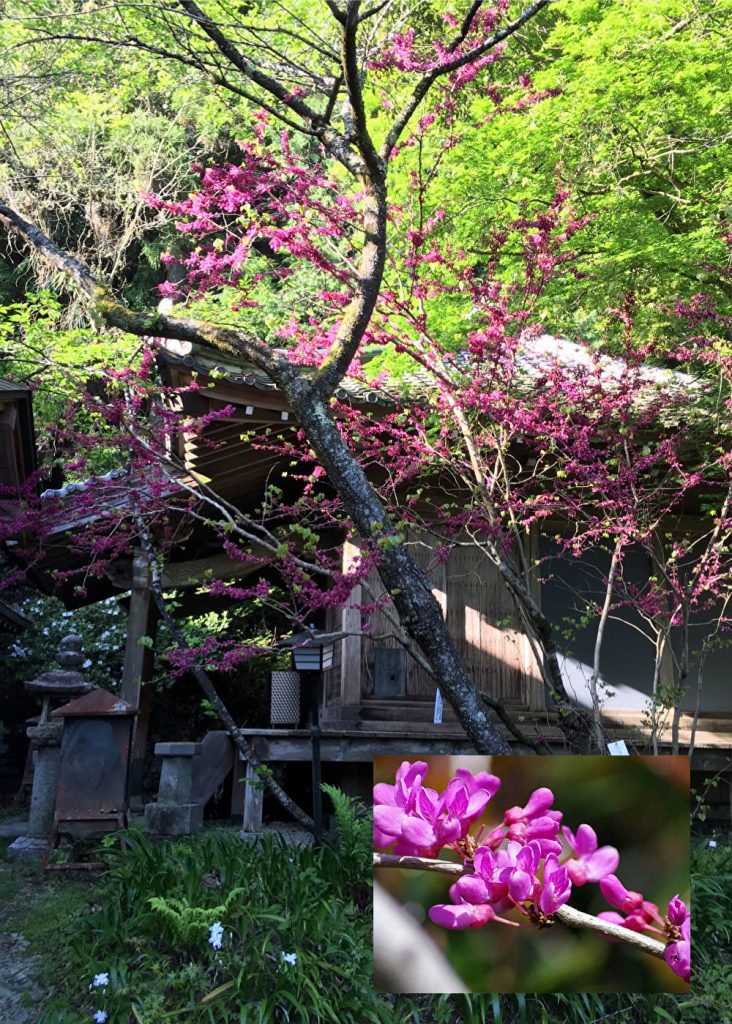
By the time cherry blossoms usually fall, the flowers of the Hana-Zuou tree are in bloom. They stand beside an inconspicuous shrine in the mountains, adding spring colors to the quiet shrine. The flowering period of the Hana-Zuou tree is usually around April, and it blooms abundantly with pinkish-purple flowers before the leaves come out. The appearance of the flower is favored by the Japanese, but even though it belongs to the same Hana-Zuou genus, it is famous in the West as a tree with negative legends and flower language. It is derived from the story of Judas, one of Jesus’ disciples, who regretted his sin after betraying Jesus and took his own life under the Hana-Zuou tree. From such a legend, scary flower language such as “betrayal” and “unfaithfulness” was given. It’s a nuisance story for flowers, isn’t it?
いつもなら桜の花が散る頃に咲く花蘇芳(ハナズオウ)の花が咲いています。山中の目立たない御堂の脇に立っていて、静かな御堂に春の彩りを添えています。花蘇芳の開花時期は例年なら4月頃で、葉が出る前に枝いっぱいに紫がかったピンクの花をたわわに咲かせます。花の姿は日本人好みの花木ですが、同じハナズオウ属でも、西洋ではネガティブな伝説と花言葉をもつ木として有名です。イエスの弟子のユダがイエスを裏切った後に、自分の犯した罪を後悔し、ハナズオウの木の下で命を絶ったことに由来します。このような言い伝えから「裏切り」とか「不信仰」などの怖い花言葉がつけられました。花こそ迷惑な話しですね。
